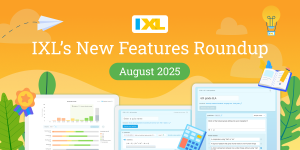At IXL, we never stop adding new features and skills to our award-winning teaching and learning platform, so you can always trust we’re on pace with students’ evolving needs. That’s why we compile a list of our top new features to help you—as a learner, educator, or parent—get the most out of IXL.
Keep reading below for a roundup of releases from August, including write your own questions, adding standards to Quiz and Common Assessment questions, national norms for several of IXL’s assessments, and more! To stay current with our latest updates, follow IXL on Facebook, Instagram, X, and LinkedIn.
Table of contents:
- Major releases
- Feature updates
- National norms for several IXL assessments
- LevelUp™ Diagnostic added to Live School
- ELA LevelUp Diagnostic standards report for 10 more states
- LevelUp high school math standards report for MS
- Updated LevelUp Math Diagnostic standards for IA and SC
- ELA LevelUp Diagnostic and multi-language support for Android
- New Getting Started Diagnostic tab for families
- New CSV export option for Students Quickview report
- Updated Quiz Analysis CSV export
- LaunchCards can now be scanned with native mobile cameras
- New themes for the student dashboard
- Skill plan updates and new skills
- Additional releases
Major releases
Write your own questions for IXL Quizzes, Common Assessments, and Quiz Library
Teachers and administrators on all English editions can now write their own question prompts and answers when creating IXL Quizzes, Common Assessments, and Quiz Library Resources! This gives educators fine control over the topics they can evaluate using IXL. It also makes it possible to migrate assessments from paper or other platforms into IXL, so educators can keep all of their assessments and results in one powerful platform.
When writing questions, teachers and administrators can create multiple choice, multiple select, or short answer prompts. Once students complete their assessments, answers are graded automatically and results are immediately available, giving educators instant data to inform decision making.
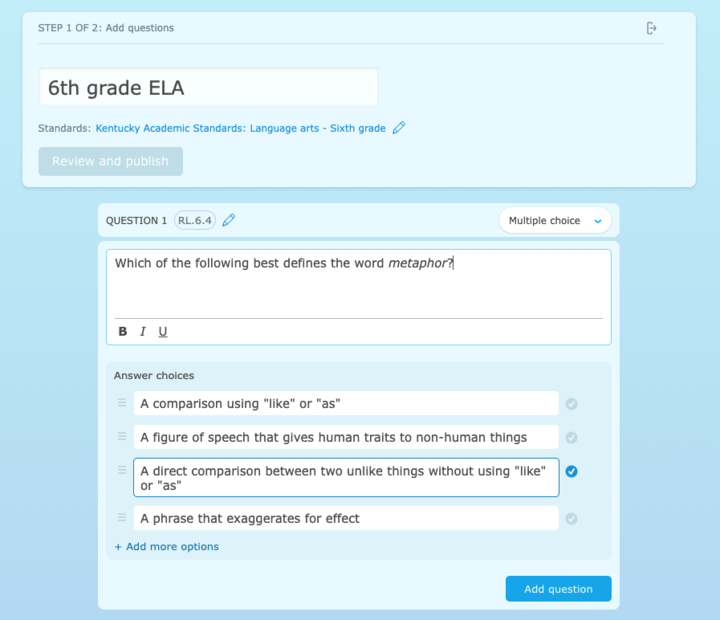
Add standards to Quiz and Common Assessment questions
Educators creating IXL Quizzes, Common Assessments, and Quiz Library Resources can now associate state or national standards with questions to see standards-based reporting for those assessments. This works with both ready-made questions drawn from IXL skills and questions that educators write themselves, and it’s available for the US, CA, UK, and AU editions of IXL.
This gives teachers access to standards-based reporting on IXL Quizzes for the first time! For administrators, who could previously only access standards reporting by adding questions from standard skill plans, this gives them more flexibility. Now administrators can manually associate standards with each question they add.
For teachers, standards-based reporting will appear in the Quiz Analysis report. For administrators, it will still appear in the Common Assessment Item Analysis and Quiz Resource Item Analysis reports.
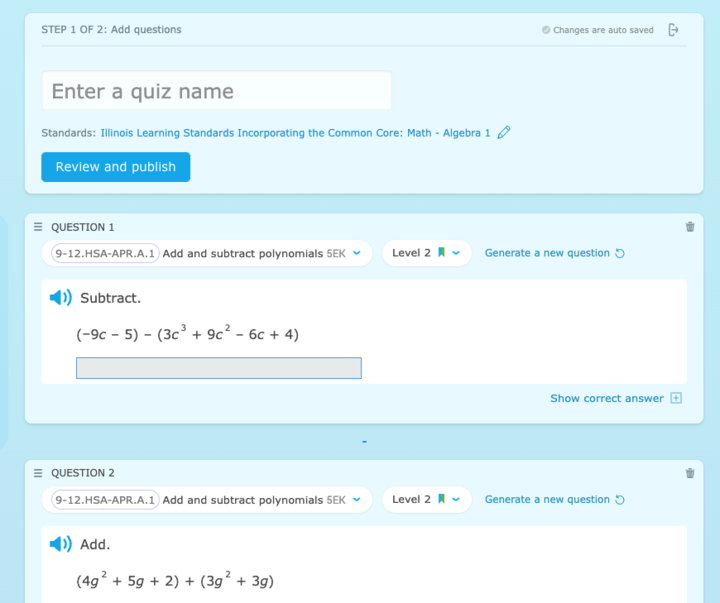
Feature updates
National norms now available for the K-8 LevelUp Diagnostic for math and IXL Universal Reading Screeners
IXL now has nationally normed data for the K-8 IXL LevelUp Diagnostic for math, IXL Universal Reading Foundations Screener, and IXL Universal Reading Comprehension Screener! Plus, norming data for the IXL Universal Screener for math and the IXL Flex Diagnostic for math and ELA has been updated. This data enables educators to compare their students’ performance with other students across the U.S.
Additionally, IXL’s norming data across all assessments is now more detailed. Specifically, students are categorized to the nearest percentile instead of to their nearest multiple of 5. For example, this means students can now be classified as being in the 82nd percentile instead of the 80th or 85th.
Administrators can access normed data directly within IXL Analytics, presented as percentile ranks. Plus, for Universal Screeners and the Flex Diagnostic, administrators can see a visual breakdown of their students’ percentile ranks using the “National norms” toggle at the top of the reports.
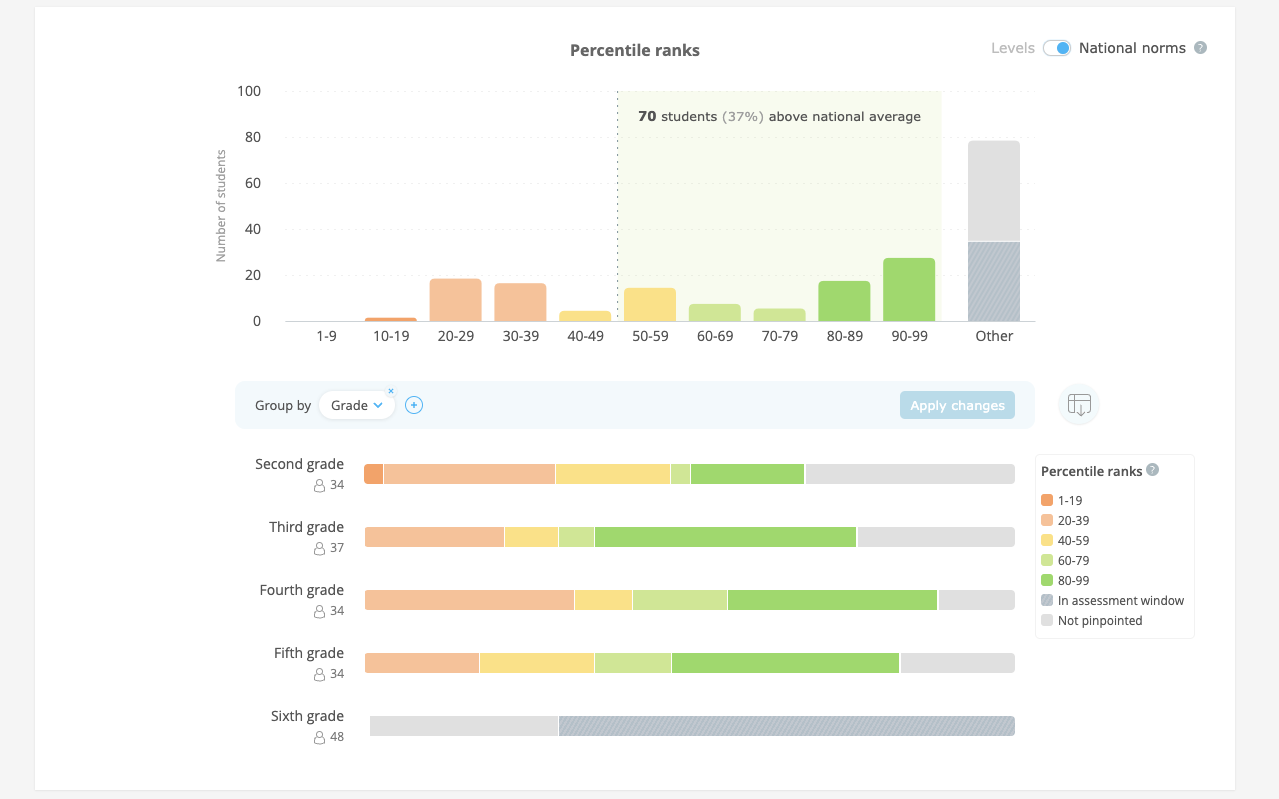
LevelUp™ Diagnostic added to Live School
Live School is a report that shows administrators what students are working on in real time, and now Live School shows when students are using the LevelUp™ Diagnostic! Students’ tiles on the Live School report will indicate if they’re in the LevelUp Diagnostic, the mode they’re using (Benchmark or Real-Time), and the number of questions they’ve answered.
For students using Real-Time mode, administrators will be able to send them messages of encouragement as they’re working. We’re excited to help administrators get more insights into their students’ activity on IXL!
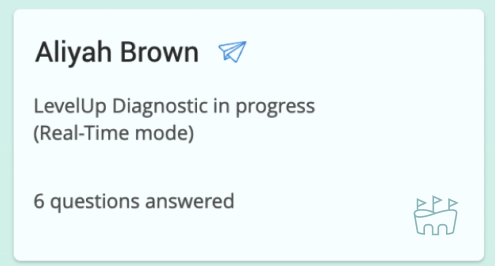
ELA LevelUp Diagnostic standards report for 10 more states
We’ve released IXL LevelUp Diagnostic for ELA standards reports for the following states:
- Arizona
- Colorado
- Louisiana
- Massachusetts
- New York
- North Carolina
- Ohio
- Oregon
- South Carolina
- West Virginia
Teachers in these states will now be able to track their students’ knowledge of state standards after completing an ELA assessment.
LevelUp high school math standards report for Mississippi
We’ve released LevelUp Diagnostic for math standards reports for Mississippi’s high school math standards! The courses included are Algebra I; Geometry; Algebra II; and Integrated Math I, II, and III. Previously, this report was only available for Kindergarten through Grade 8. We will continue to release additional states’ high school standards reports in the coming months.
Updated LevelUp Diagnostic for math standards report for Iowa and South Carolina
We’ve updated our IXL LevelUp Math Diagnostic standards reports to display the K-8 math standards being taught in the 2025-26 school year in Iowa and South Carolina:
- Iowa Academic Standards for Mathematics (adopted in 2024)
- South Carolina College- and Career-Ready Standards (adopted in 2023)
Users in these states will see their students’ performance levels on these standards in the report automatically.
LevelUp Diagnostic for ELA and multi-language support for Android
Students can now access the LevelUp Diagnostic for ELA on IXL’s Android app! This gives learners more flexibility in how they work on the LevelUp Diagnostic, so they can benefit from LevelUp’s tailored action plans more easily.
Additionally, the Android app now offers language support for more than 100 languages! With a simple tap, students can see IXL math, science, and social studies skills in their native language. Plus, audio support is available in 70 languages, so learners can hear questions and answers read aloud.
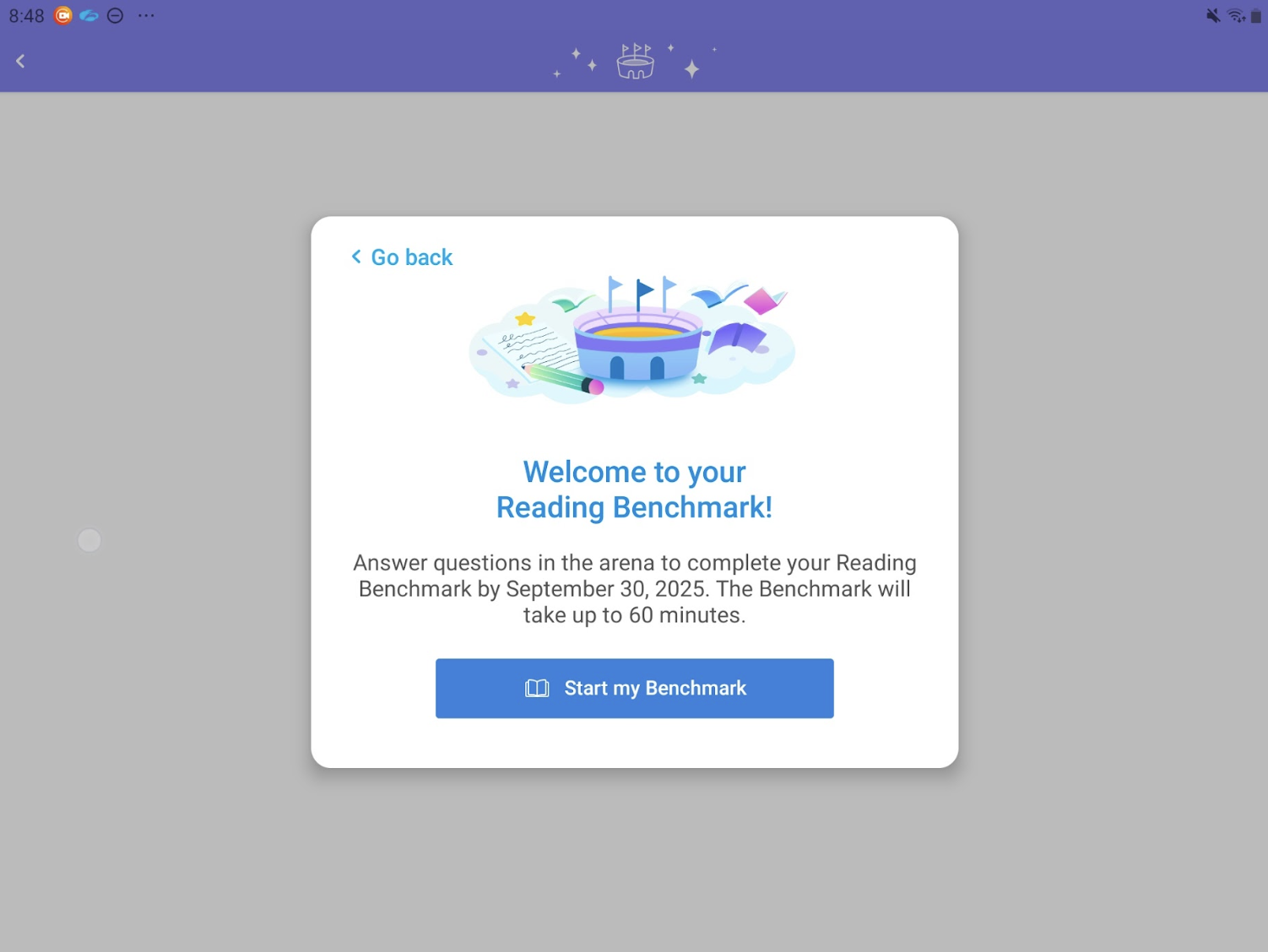
New Getting Started Diagnostic tab for families
Parents on Family accounts now have a new Getting Started tab, which introduces them to IXL’s Diagnostic and makes it easy to start using it at home. It includes videos that walk through the experience step by step, as well links to additional resources to help support parents and their children.
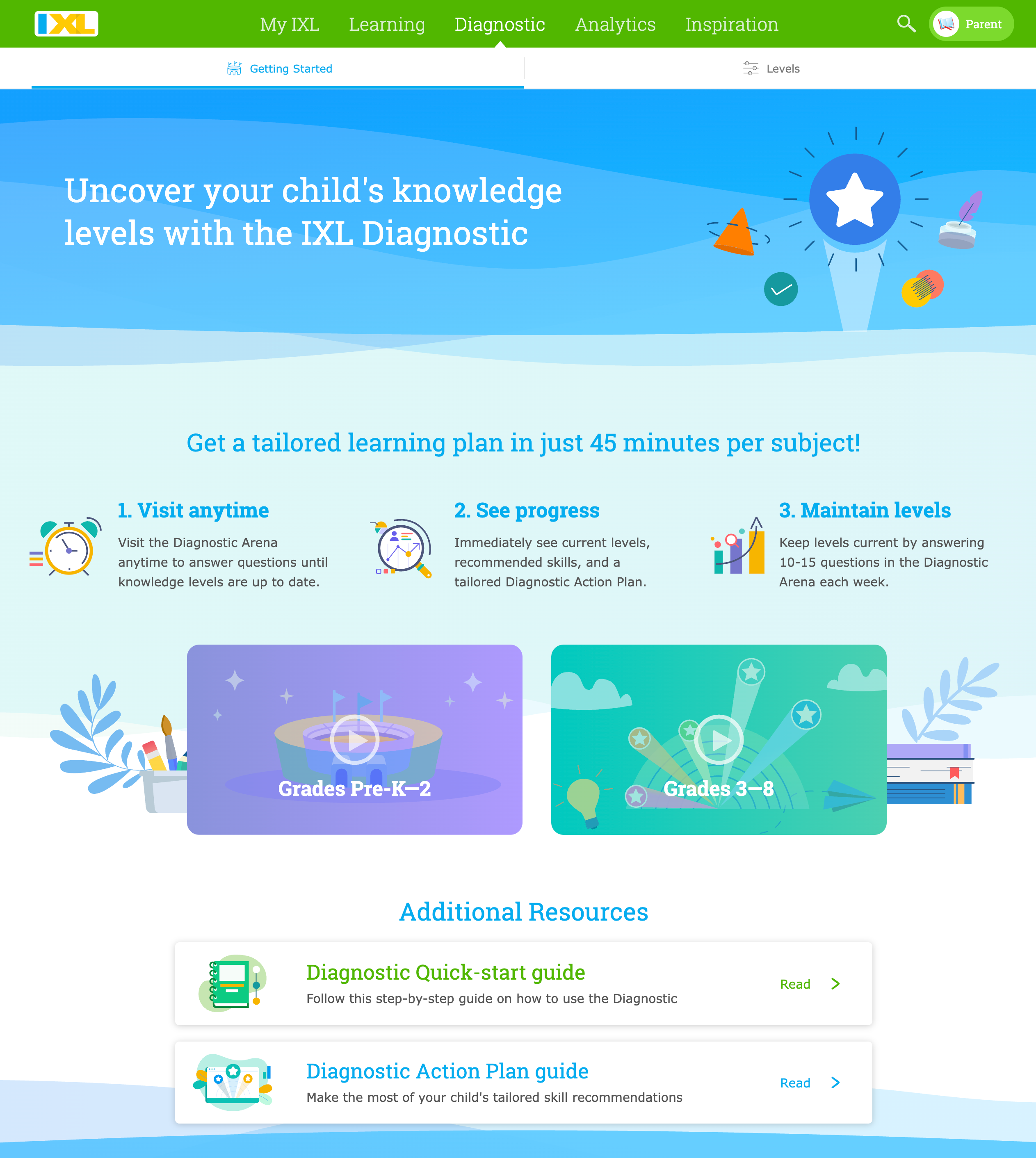
New CSV export option for Students Quickview report
We have added a new export for the Students Quickview report! This CSV export reflects each student’s skill practice data within the selected date range, including the number of skills practiced, skills proficient and mastered, total questions answered, and time spent practicing. Teachers can download the CSV export by clicking the download icon next to the “Students” header.
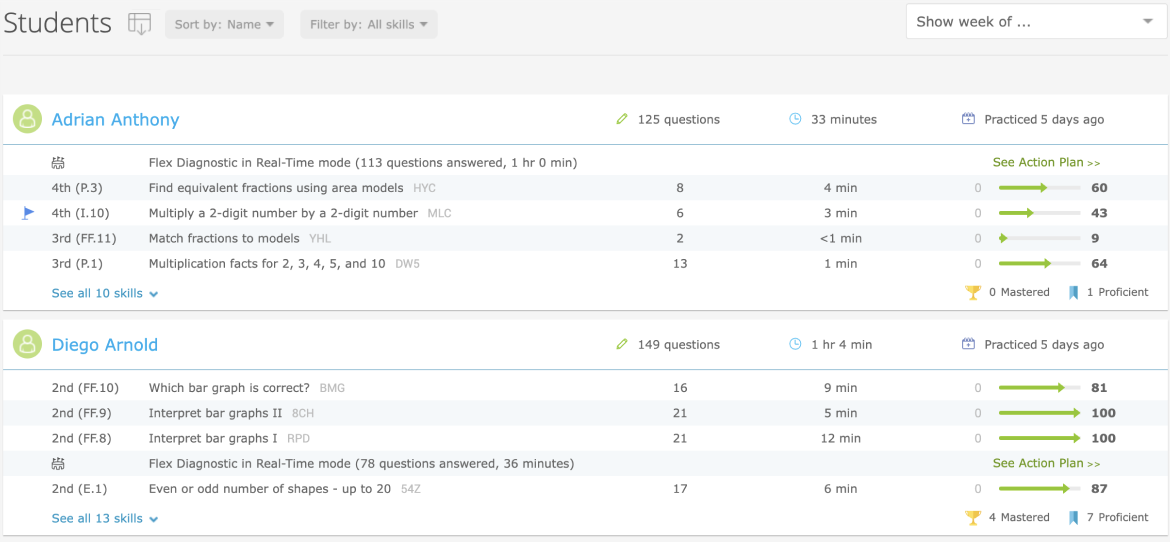
Updated Quiz Analysis CSV export
We’ve upgraded the Quiz Analysis report’s CSV export by adding two new columns: time spent and submission time. Previously, this information was only accessible by hovering over a student’s name in the Student Scores section of the report, and submission time was limited to just the date. Now, teachers can easily view this detailed information for every student directly in the CSV export.
LaunchCards can now be scanned with native mobile cameras
Students can now scan their LaunchCards using their mobile device’s native camera on the camera app. This creates an easier, more seamless experience for students who use LaunchCards to sign in to IXL.
Students who scan LaunchCards with their mobile device’s camera app will be directly signed into the IXL app if they have it downloaded. Otherwise, they will be redirected to the LaunchCards sign-in page on their browser. Like before, students can also scan their LaunchCard using the scanner on the IXL app and website. This new functionality is available for LaunchCards generated after 08/01/2025, on all editions.
New themes for the student dashboard
Students can customize their dashboards with two new seasonal themes for fall! The new Farm theme will be available during September, while the Halloween theme will be available during October. In Australia, New Zealand, and South Africa, students will be able to use the new spring themes (Garden and Picnic) starting in September.
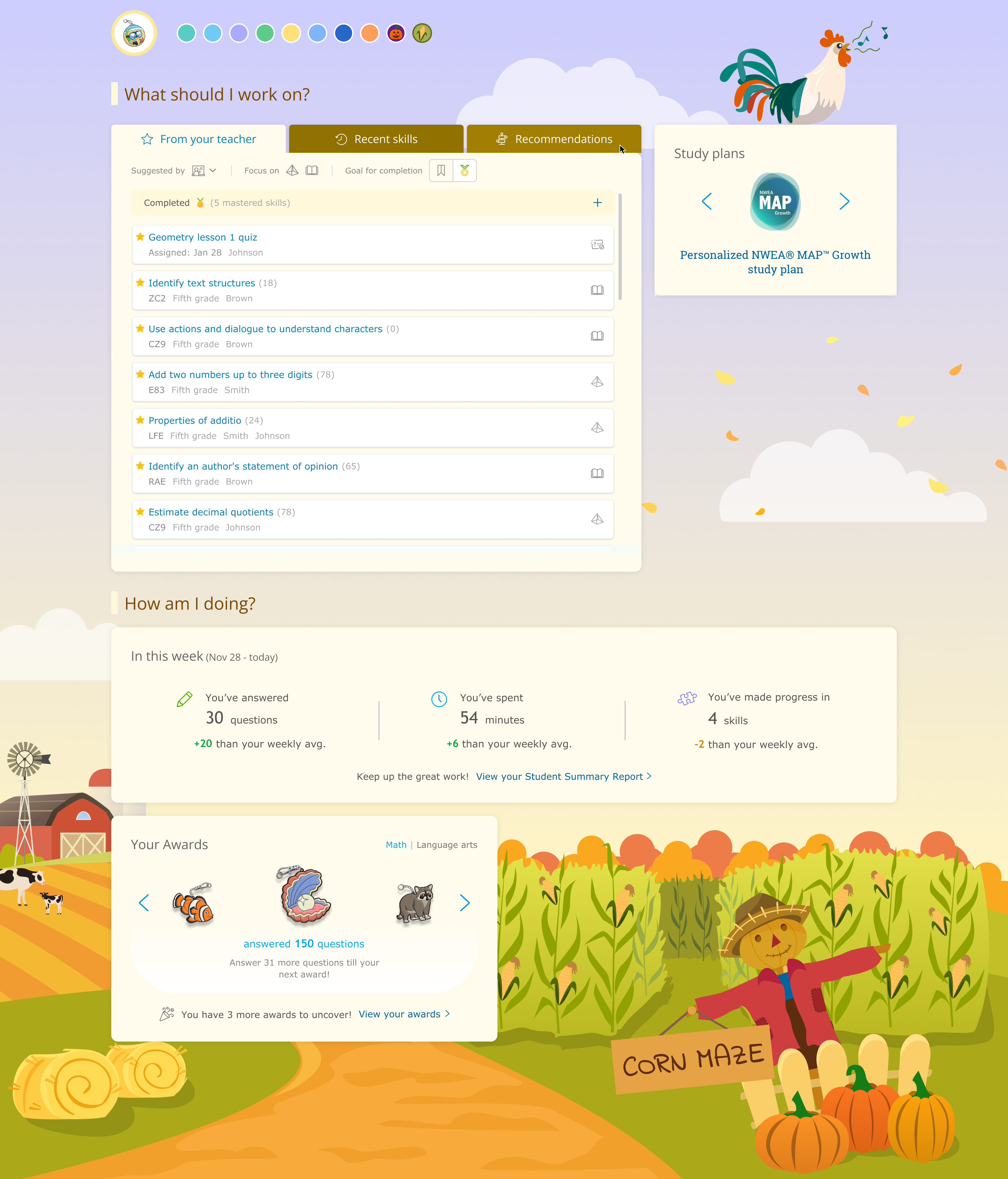
Skill plan updates and new skills
Updated StudyWise support for NWEA MAP
IXL’s StudyWise tool turns student’s previous test scores into their own personalized study plans. Now StudyWise supports new grades and topics for NWEA MAP: science for grades 2-8, and high school math for Algebra 1, Algebra 2, and Geometry! With this release, students have more options to use StudyWise to see the best skills they can work on.
Additionally, we’ve updated existing math and ELA plans to factor in each student’s grade level, so those plans will give students stronger starting recommendations.
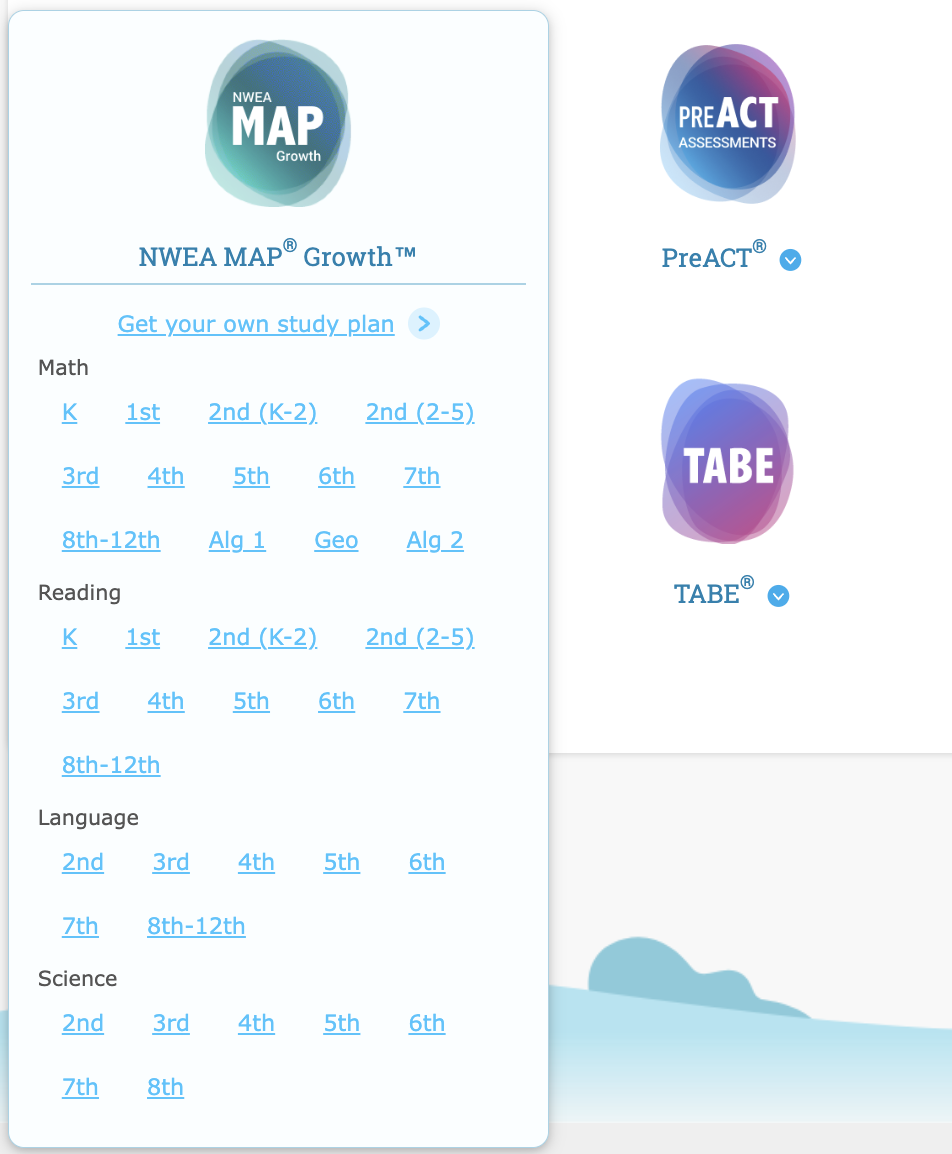
New math skills
We’ve released over a dozen new math skills for elementary school, as well as one for calculus!
- Greater than, less than, or equal to – compare by counting up to 20 (Kindergarten)
- Subtract by counting back – up to 100 (Grade 1)
- Add by counting on – sums to 100 (Grade 1)
- Two-dimensional shapes in real-world objects (Grade 1)
- Three-dimensional shapes in real-world objects (Grade 1)
- Compare and order numbers using number lines (Grade 3)
- Interpret circle graphs (Grade 3)
- Find start and end times: two-step word problems (Grade 3)
- Identify equivalent fractions using one model (Grade 3)
- Interpret frequency tables to find the mode, median, or range (Grade 4)
- Multiply fractions by whole numbers using number lines (Grade 4)
- Acute, right, obtuse, straight, and reflex angles (Grade 4)
- Divide 3-digit numbers by 2-digit numbers: write remainders as fractions (Grade 5)
- Area and perimeter of rectangles with decimals (Grade 5)
- Put decimal numbers in order using number lines (Grade 5)
- Use equations with unknown numbers to solve multi-step word problems (Grade 5)
- Create line plots with decimals (Grade 5)
- Area and perimeter of rectangles with fractions (Grade 5)
- Integrate by completing the square (Calculus)
New Spanish language arts skills
We’ve added four new Spanish language arts skills!
- Leer sobre ciencias y naturaleza [Read about science and nature] (Grade 3): Students build their reading comprehension skills while engaging with passages about icebergs, fireflies, cartilage, and more!
- Leer ficción realista: colección 1 [Read realistic fiction: set 1] (Grade 3): Students read creative long pieces of fiction and answer questions that help them build an understanding of the plot.
- Comparar la información de dos textos informativos [Compare information from two informational texts] (Grade 4): Students read two engaging texts about the same topic and identify key details from each one. Then, they answer questions about the texts’ similarities and differences.
- Leer sobre negocios y tecnología [Read about business and technology] (Grade 5): Students practice essential skills—such as identifying main ideas, making inferences, and using context clues—while reading compelling texts on topics like the evolution of email and the origin of the barcode.
New science skills
We’ve released six new science skills!
- Newton’s laws of motion (Grade 8): Students demonstrate their understanding of Newton’s three laws of motion by identifying how these laws are relevant to real-world scenarios.
- Sexual reproduction and genetic variation: part II (Biology): Students learn about the role of meiosis in sexual reproduction. With the aid of eye-catching diagrams, students learn how the processes of independent assortment, crossing over, and random fertilization increase genetic variation among offspring.
- Cells and cell theory (Biology): Students engage with micrographs and diagrams to learn about similarities and differences between prokaryotic and eukaryotic cells, as well as plant and animal cells. They describe the three tenets of cell theory and discover how the contributions of many scientists over many years led to the theory’s development.
- Identify the electron configuration of an atom or ion (Chemistry): Students use the periodic table to identify the electron configurations and noble gas configurations of atoms and ions.
- Identify the stresses that cause an equilibrium shift (Chemistry): Students use Le Châtelier’s principle to determine which applied stresses—such as changes in reactant or product concentration, changes in temperature, changes in volume and pressure, and addition or removal of a catalyst—will shift the equilibrium toward reactants or products.
- Convert between volume and moles of a gas at STP (Chemistry): Students practice converting between moles and volume of a substance using the molar volume of a gas at standard temperature and pressure.
New social studies skills
We’ve released ten new social studies skills!
- Benjamin Franklin, Davy Crockett, Neil Armstrong, Theodore Roosevelt, John Deere (Grades K-3): Students learn about the lives and accomplishments of these famous figures from U.S history. The skills are brand new for kindergarten through grade 1, with read-along highlighting and record audio to support early readers. In grades 2 and 3, we’ve improved our existing skills with written passages for deeper learning.
- The Southern Colonies (U.S. History): Students will analyze the establishment and development of this colonial region, focusing on defining features like the plantation system and the House of Burgesses.
- The Middle Colonies (U.S. History): Students learn about the region’s founding and development, focusing on its diverse ethnic and religious makeup.
- The New England Colonies (U.S. History): Students analyze the foundation of the northern colonies, focusing on the development of their economic, political, and social systems, as well as their interactions with Native Americans.
- The Revolutionary War: part I (U.S. History): Students analyze the military and diplomatic aspects of the war from 1775 through early 1778, in particular the Battles of Lexington and Concord, winter quarters at Valley Forge, and the Treaty of Alliance with France.
- The Civil War: part I (U.S. History): Students learn about the first half of the American Civil War, from the secession of Southern states to the Emancipation Proclamation in 1862, covering each side’s initial advantages, important battles, and the shifting goal of the war over time.
New textbook skill plans
We’ve released skill plans for the following textbooks:
Math:
- Amplify Desmos Math (Grades K-Algebra 1)
ELA:
- HMH Intro Reading (Version 3) (Grades K-5)
Social Studies:
- McGraw Hill Texas Social Studies (World Cultures & Geography [Grade 6] and U.S. History to 1877 [Grade 8])
- NYC Department of Education: Passport to Social Studies (Grades K-2 and 6-8)
New test prep skill plans
We’ve updated the skill alignments in our Checkpoint 1 skill plans for Indiana ILEARN Checkpoints for math and ELA. The changes involve adding and removing skills and shifting skills to different levels. The updated plans more closely match the content expectations for the Checkpoint 1 tests.
Additionally, we’ve released math and reading test prep skill plans for the ASVAB (Armed Services Vocational Aptitude Battery) in IXL’s Independent Learner edition. These skill plans offer streamlined and targeted support for users to prepare for four subtests of the ASVAB.
We’ve organized skills into three difficulty levels to help students prepare effectively:
- The Proficient level aims to match the expected level of difficulty for the majority of questions on the exam.
- The Developing level focuses on the foundational skills that build towards proficiency.
- The Advanced level focuses on the most challenging questions students might encounter.
Additional releases
ELA video tutorials for the Canadian edition
Video tutorials are now available in ELA grades 3 through 8 in the Canada edition! The initial release for these grades features videos for over 330 skills, covering about 75% of the Reading and Writing Strategies skills in each grade level, along with select Grammar & Mechanics skills. We’ll continue to add videos to more skills in the Canada edition in the coming months.
New math and ELA video tutorials
Math:
We’ve released 31 new math videos to expand our coverage! These videos cover topics such as multi-step word problems with fractions and mixed numbers and adding two numbers with sums up to 10.
ELA:
We’ve released 23 new ELA videos across grades Pre-K through 8! These videos cover topics such as reading drama and learning the letter U.
For IXL Canada, we’ve released nine new localized ELA videos, 13 new localized math videos, and 85 new videos for Calculus (covering about 70% of our Calculus skills). This means that we now have math video tutorial coverage in every grade level in the Canadian edition! Check out our videos on finding derivatives of polynomials and determining if a limit exists.
Takeoff instructional slides
We’ve added a new type of material for Takeoff, Takeoff instructional slides! Teachers can use these instructional slide decks to teach Takeoff lessons alongside provided student materials. We currently have instructional slides for the following units in both the national and California editions:
- Kindergarten Units 1-2
- Grade 1 Units 1-3
- Grade 2 Units 1-3
- Grade 3 Units 1-3
- Grade 4 Units 1-3
- Grade 5 Units 1-4
These slides are available as downloadable PowerPoint files in the Materials section of each lesson. We’ll continue releasing slide decks throughout the year.
Takeoff alignment to Idaho, North Carolina, and North Dakota state standards
We’ve added alignments for the Idaho Content Standards, North Carolina Standard Course of Study, and North Dakota Content Standards for math to our K-5 Takeoff curriculum! When signed into a Takeoff account from Idaho, North Carolina, or North Dakota, users will see their state standards in all the usual places, such as on each grade level’s landing page and at the top of each unit and lesson.
We also recently made alignments to the Standards for Mathematical Practices visible for Indiana users.
